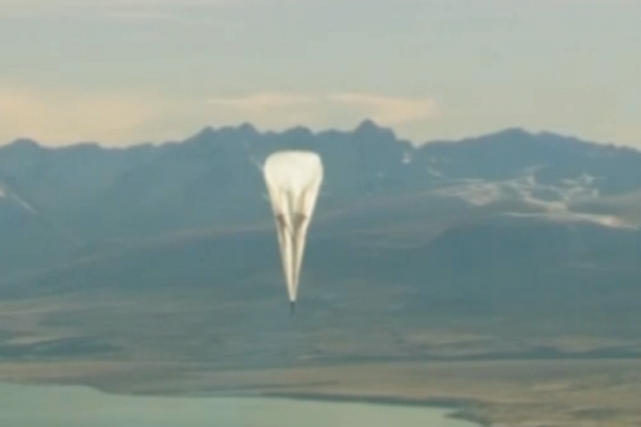Project “Loon” (translated “fool”) is the latest venture by Google. U.S. internet giant boost in addition to the virtual network, taken for the provision of the Internet. Will broadcast a signal through the balloons. Is grabs a goose chase? At the moment in New Zealand takes the first test phase of the project. However, since its success may depend on how quickly people on earth will have easier access to the Internet.

Google balloon project. • Screenshot from YouTube.com / ITN
From a distance they look like flying jellyfish – these balloons released by Google from the South Island of New Zealand. Eventually they settle down in the stratosphere, about 20 kilometers above the earth’s surface. Start balloons is the climax of the “Loon”, on which 18 months of work, researchers in google’owskim X-Lab. It was in this laboratory, in addition to research on the aforementioned balloons are developed cars that do not need drivers, as well as Google Glass.
Google Heads make plans in the future to release thousands of such balloons. This allows easier access to the 4.8 billion people around the world. According to Google statistics just so people do not have a “hard” connection to the Internet. The “Loon” is designed to help residents mainly African and Asian countries, where the jungles and mountainous terrain make the cost of telephone cable routing is extremely high.
Each of the balloons will be released at the height of 20 km. Ultimately, they have to circle the earth with the stratospheric winds. In the past, similar attempts at this height ended up losing control of the balloon. Therefore, each of them is equipped with an onboard computer that will watch over the course balloon. Thanks to Google all the time will be able to transmit the signal.
We believe that we can create a ring of balloons that will be orbited the earth. This is just the initial phase of this project. But now we have created a system that provides the Internet with balloons. For safety, they are at a height of two times higher than that at which commercial aircraft fly. They give a signal comparable to or even stronger than you are currently using the 3G network.
We hope that they will help to provide internet to places remaining in the wilderness, neglected, or poor. Besides, such a network would prove useful in cases of natural disasters, because it has been destroyed – says Cassidy. READ MORE
Google indicates that each balloon is capable of transmitting a signal on the square area of ??1250 km. This is roughly the size of the Upper Silesian conurbation. Balloons are powered by energy harvested from solar panels, and connect to the Internet via terrestrial transmitters. These in turn are to be spaced at 100 km.
First person who obtained access to the balloon was Charles Nimmo, a farmer from the small town of Leeston. Google engineers are mounted on the wall of his home receiver the size of a basketball, with which he could receive the signal from the stratosphere. Farmer immediately after connecting to the network check if the weather is right to przystrzy?enia sheep. “Business Insider” quotes him as saying, to the effect that the current bills for satellite internet to pay a thousand dollars a month.
Placing balloons in the stratosphere is beyond the financial dimension. This domain is not taxed by other states, which make paying millions of dollars for various licenses. In a word, Google does not bear additional costs for delivery of a signal. In addition, researchers in the X-Lab are working to production costs balloons and receivers as low as possible. In this phase of the project Google plans to create a ring of balloons around 40 parallel. It runs by New Zealand, Australia, Chile, Uruguay, Paraguay and Argentina. However, the company does not tell how much will cost the receiver which can be used to receive the signal. However, judging by the statements Cassidy should not be too high. – It’s hard to imagine, but in the southern hemisphere price of Internet access is the same as one person earns in a month. Therefore, there is hardly anyone to access it – he wrote on his blog scientist. In early April, Google CEO Eric Schmidt has created a listing on Twitter: “For any online accounts for two people without internet. By the end of the decade, every inhabitant of the earth will have access to the network. ” If you are crazy project “Loon” is successful, so it happens. Read also:Google launches the Google Glass. See how you feel in them [video]
the Internet, pirates their servers will place a few kilometers above the earth
Source: Google Blog, Business Insider,
Want to get info about new entries?


No comments:
Post a Comment